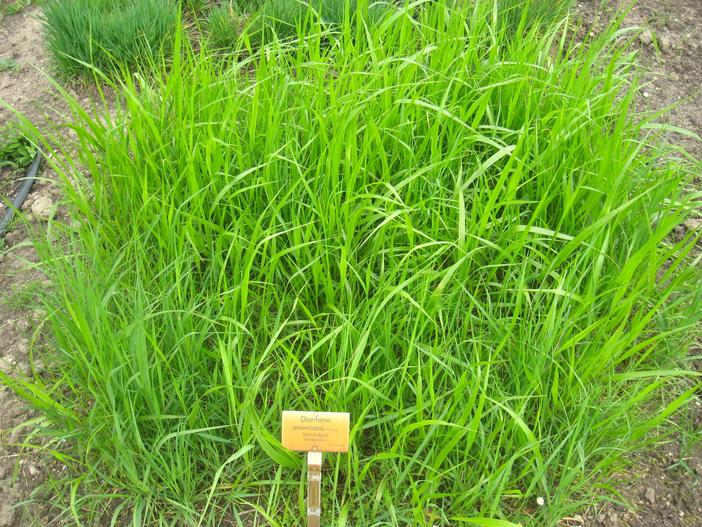American Beakgrain
(Diarrhena americana)
American Beakgrain (Diarrhena americana)
/
/

Daderot
Public domain
Image By:
Daderot
Recorded By:
Copyright:
Public domain
Copyright Notice:
Photo by: Daderot | License Type: Public domain | License URL: https://creativecommons.org/public-domain/ | Uploader: Daderot | Publisher: Wikipedia Commons


































Estimated Native Range
Summary
Diarrhena americana, commonly known as American Beakgrain, is a perennial herbaceous plant that forms dense clumps typically 2–3 feet (0.61–0.91 m) tall. It is native to rich, moist woods and stream banks in the central and eastern United States. Its bright green leaf blades are broad for a grass, reaching up to 0.75 inches (1.9 cm) in width. The plant produces inconspicuous flowers that rise above the foliage on 3-inch tall floral spikes during early to mid-summer. By late summer, these flowers mature into hard, brown seed heads, each with a distinctive blunt beak, which gives the plant its common name. The seeds are adapted for dispersal by water or passing animals.
American Beakgrain is valued for its adaptability and low maintenance, thriving in a range of conditions from full shade to partial sun. It is drought-tolerant and can withstand competition from eastern black walnuts, as well as urban air pollution. This makes it suitable for urban gardens, wildlife habitats, and natural landscaping. In optimal conditions, it prefers moist, rich soils but is quite versatile, growing well in soils with slow to medium drainage. It is often used for erosion control due to its clumping growth habit and is also appreciated for its ability to provide texture and greenery in shaded garden spots.CC BY-SA 4.0
American Beakgrain is valued for its adaptability and low maintenance, thriving in a range of conditions from full shade to partial sun. It is drought-tolerant and can withstand competition from eastern black walnuts, as well as urban air pollution. This makes it suitable for urban gardens, wildlife habitats, and natural landscaping. In optimal conditions, it prefers moist, rich soils but is quite versatile, growing well in soils with slow to medium drainage. It is often used for erosion control due to its clumping growth habit and is also appreciated for its ability to provide texture and greenery in shaded garden spots.CC BY-SA 4.0
Plant Description
- Plant Type: Grass
- Height: 2-3 feet
- Width: 2-3 feet
- Growth Rate: Moderate
- Flower Color: N/A
- Flowering Season: Summer
- Leaf Retention: Semi-Deciduous
Growth Requirements
- Sun: Part Shade, Full Shade
- Water: Medium
- Drainage: Slow, Medium
Common Uses
Drought Tolerant, Low Maintenance, Rock Garden
Natural Habitat
native to rich, moist woods and stream banks in the central and eastern United States
Other Names
Common Names: American Beak Grass
Scientific Names: , Diarrhena americana, Festuca diandra, Diarina festucoides, Diarrhena americana var. americana, Korycarpus diandrus, Diarina sylvatica, Diarrhena arundinacea, Diarrhena diandra, Diarrhena festucoides
GBIF Accepted Name: Diarrhena americana P.Beauv.